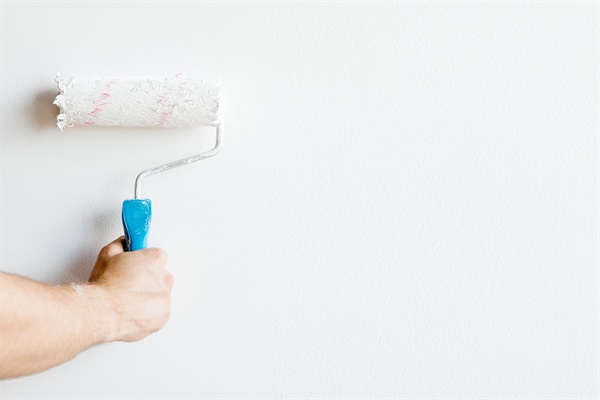How to Handle Paint Touch-Ups and Maintenance in High-Traffic Areas

High-traffic areas in a home or commercial space require special attention when it comes to paint touch-ups and ongoing maintenance. These areas, such as hallways, entryways, and kitchens, are more prone to wear and tear, making it essential to maintain their appearance with the right techniques and materials.
Regular upkeep ensures that these spaces continue to look fresh and clean, enhancing the overall aesthetic of the property. In this article, we will explore the best practices for managing paint touch-ups and maintenance in high-traffic areas. We'll cover essential topics such as how to match paint colors for touch-ups, the tools needed for effective touch-up painting, and strategies to prevent paint wear and tear.
Whether you're a homeowner looking to maintain your interior or a property manager ensuring the upkeep of a commercial space, understanding how to effectively manage paint maintenance will ensure your high-traffic areas remain in top condition.
Best Practices for Touch-Up Painting in High-Traffic Areas
Touch-up painting is a crucial aspect of maintaining high-traffic areas. The best practices involve proper preparation, such as cleaning the area thoroughly and ensuring it’s free of dust and grease. It's also important to use the same paint and finish originally applied to ensure consistency. When applying the touch-up paint, use a light hand to blend the new paint seamlessly with the existing layer, preventing noticeable patches or streaks.
To achieve the best results, avoid painting in extreme temperatures or high humidity, as these conditions can affect the drying and curing process. Additionally, using high-quality brushes or rollers designed for the type of paint you are using will ensure a smooth application. For those looking to maintain a pristine look in their high-traffic areas, regular inspections and prompt touch-ups are key to preventing minor imperfections from becoming major eyesores.
How to Match Paint Colors for Touch-Ups
Matching paint colors for touch-ups can be challenging, especially if the original paint has aged or the color formulation has changed. To start, always keep a record of the paint used, including the brand, color name, and finish. If this information is not available, take a sample from an inconspicuous area to a paint store for a color match.
Modern technology allows for precise color matching, but slight variations can still occur. To minimize discrepancies, use the same application method as was originally used, whether it was brushed, rolled, or sprayed. Also, consider the lighting conditions in the room, as light can alter the perceived color of paint. Testing a small area first before doing a larger touch-up is advisable to ensure a good match.
Essential Tools for Effective Touch-Up Painting
Having the right tools is essential for successful touch-up painting. Start with high-quality brushes that match the type of paint and finish you’re working with. For smaller areas or detailed work, an artist’s brush can be incredibly useful. Additionally, a clean, lint-free cloth is important for wiping down surfaces before you begin.
Other essential tools include a paint tray or palette for easy access to your paint, painter’s tape to protect adjacent surfaces, and fine-grit sandpaper for smoothing out any rough spots before painting. A good-quality putty knife is also handy for filling in any small holes or imperfections before applying the touch-up paint.
Preventing Paint Wear and Tear in High-Traffic Areas
Preventing paint wear and tear in high-traffic areas requires a combination of the right materials and regular maintenance. One of the most effective strategies is to choose a durable paint designed for high-traffic areas. Semi-gloss or satin finishes are typically more resilient than flat paints, making them better suited for areas that see a lot of activity.
In addition to selecting the right paint, protecting your walls with physical barriers like chair rails or wainscoting can reduce the amount of wear on painted surfaces. Regular cleaning is also important, as dirt and grime can wear down paint over time. Using a mild detergent and a soft cloth to clean walls can help preserve the paint's integrity without damaging it.
Durable Paint Types for High-Traffic Areas
When it comes to high-traffic areas, choosing the right type of paint is crucial for longevity and durability. Paints with a semi-gloss or satin finish are often recommended because they are easier to clean and resist scuff marks better than matte finishes. Additionally, these types of paint tend to be more resistant to moisture and mildew, making them ideal for areas like kitchens and bathrooms.
For even greater durability, consider using high-quality, washable paint. These paints are designed to withstand frequent cleaning and are less likely to show signs of wear. In commercial settings, where traffic is particularly heavy, epoxy-based paints or other industrial-grade coatings might be the best option for ensuring the longevity of the painted surfaces.
Why Regular Maintenance is Key for Long-Lasting Results
Maintaining the appearance of high-traffic areas requires consistent effort and the right approach. By implementing the best practices for touch-up painting, using durable materials, and performing regular maintenance, you can significantly extend the life of your painted surfaces.
Whether you're managing a commercial property or maintaining your home, Get Fresh Paint is here to help you achieve long-lasting, professional painting results. For more information or to schedule a consultation, call us today at 612-325-1409 or visit our locations in Maple Grove and Golden Valley, MN.